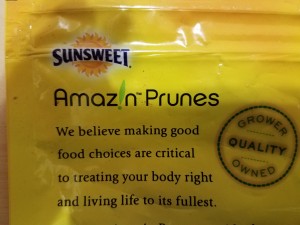What the heck is Domo and why should you care?
If you watch as much TV/cable news and commentary as I do, chances are good that you’ve seen an advertisement for something called Domo. It’s been running a lot over the past couple months. In case you’ve missed it, here it is:
Do you understand what Domo is from this commercial? Apparently it’s something that allows you to “connect with anything in the company” and gives you the “company data in one place.” And let’s not forget, it will help Jeanne, who is always cold (huh?). The tagline on the commercial is Domo: For the good of the company.
This commercial is successful in making you wonder what Domo is, and maybe, like me, you go search it out on the web.
Take it to the internet
Some internet research into Domo reveals that it is a software company that deals in “business intelligence” and “data visualization.” A visit to Domo’s website has the description “connecting your data, systems and people” in the navigation bar. The home page has a tagline/descriptor that says: “Everybody on the same page, all the time. Run the business from your phone.”
Here you do learn more about it. When I scroll down there is a part of the home page called product benefits where I learn that Domo is “the fully-mobile, cloud-based operating system that unifies every component of a business. Data becomes decisions, ideas turn into action.” Someone needs to explain to Domo that this is not a listing of benefits, but rather an actual description of the product.
Then I click on “product” on the navbar. I get this content:
Domo creates a truly digitally-connected organization.
The sum of Domo’s parts deliver a virtuous cycle of business optimization. Everyone knows more, works together better, and gets more done, faster.
(And here we find a new contender for unintelligible business jargon: “A virtuous cycle of business optimization.”)
But what is it? And why do I care?
I don’t know about you, but I am still confused. I am confused because at no point does the ad or the website explain what exactly we are talking about and why being connected to all your data and systems in one place (apparently your phone) makes things run better.
There are so many issues both with the website messaging and with the TV commercial. The website and the commercial feature taglines, descriptors, slogans, product benefits, a product description–and none of them match up. The website prominently features a phrase that tells you you can get to everything from your phone. Is this the main selling feature?
Who should hear about it?
It’s clear that the target audience for the TV commercial is a CEO or a COO of a company. We know this because we have the self-effacing female administrative assistant who starts by saying she’s not the “c-anything o,” and ends by saying that the CEO, to whom she is writing the email suggesting the company get Domo, is really the one who runs things.
How is it then that the lowly admin knows about this amazing product? And what I really don’t get is how having data visualization on your smartphone is going to help Jeanne who is always cold?
The bottom line
Domo, with its short and easy to remember name, has succeeded in building brand recognition and perhaps even increasing its website traffic. What is less clear is if has succeeded in getting customers. There’s a lot of explaining that needs to be done about what Domo actually is, how it works, and why you need it. To be successful in your branding, you need clear and consistent messaging and a strong selling proposition.
Domo has many messages and several reasons (maybe too many) for you to consider getting it.
What do you think? Do you understand Domo? Do you need Domo?
You may have noticed that the DBMC website has been spruced up a bit. During the “remodeling” I refrained from blogging so that there would be no new content to migrate to the new site. But now I am back! Let me know what you think of the new website.
